The Four C's of Diamonds
Many people are confused about how diamonds are priced. The best explanation is that asking for the price of a diamond is like asking for the price of a house. A real estate agent can’t quote you a price for a house without knowing its size, condition, location, etc. This process is the same one used when buying a diamond. A diamond’s beauty, rarity, and price depend on the interplay of all the 4Cs—cut, clarity, carat, and color.
The 4Cs are used throughout the world to classify the rarity of diamonds. Diamonds with the combination of the highest 4C ratings are rarer and, consequently, more expensive. No one C is more important than another in terms of beauty and it is important to note that each of the 4Cs will not diminish in value over time.
Once you have established those 4C characteristics that are most important to you, a jeweler can then begin to show you various options with quoted prices.

Carat:
Refers to the Weight of a Diamond
The size of a diamond is defined by its weight, which is expressed in carats. One carat weighs one-fifth of a gram and is divided into 100 points – like pennies to a dollar. The larger the diamond the more rare and costly it is. However, depending on their color, clarity and cut, two diamonds of the same carat weight can vary widely in their value.
Clarity:
Refers to the Presence of Inclusions in a Diamond
Every diamond is unique. Nature ensures that each diamond is as individual as the person who wears it. Naturally-occurring features—know as inclusions—provide a special fingerprint within the stone. Inclusions are natural identifying characteristics such as minerals or fractures, appearing while diamonds are formed in the earth. They may look like tiny crystals, clouds or feathers.
To view inclusions, jewelers use a magnifying loupe. This tool allows jewelers to see a diamond at 10x its actual size so that inclusions are easier to see. The position of inclusions can affect the value of a diamond. There are very few flawless diamonds found in nature, thus these diamonds are much more valuable.
Inclusions are ranked on a scale of perfection, known as clarity, which was established by the Gemological Institute of America (GIA). The clarity scale, ranging from F (Flawless) to Included (I), is based on the visibility of inclusions at a magnification of 10x.
Some inclusions can be hidden by a mounting, thus having little effect on the beauty of a diamond. An inclusion in the middle or top of a diamond could impact the dispersion of light, sometimes making the diamond less brilliant.
The greater a diamond’s clarity, the more brilliant, valuable and rare it is.






Color:
Refers to the Degree to which a Diamond is Colorless
Diamonds are found in almost every color of the rainbow, but white-colored diamonds remain most popular.
Diamonds are graded on a color scale established by the Gemological Institute of America (GIA) which ranges from D (colorless) to Z. Warmer colored diamonds (K–Z) are particularly desirable when set in yellow gold. Icy winter whites (D–J) look stunning set in white gold or platinum. Color differences are very subtle and it is very difficult to see the difference between, say, an E and an F.
Therefore, colors are graded under controlled lighting conditions and are compared to a master set for accuracy. Color, however, ultimately comes down to personal taste. Nature has also created diamonds in intense shades of blue, green, yellow, orange, pink or – rarest of all – red. These diamonds are called ‘colored fancies’ and are extremely rare and highly treasured.
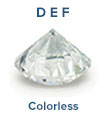
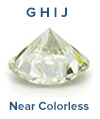
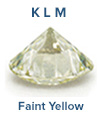
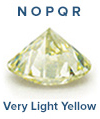
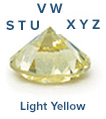
Cut:
Refers to the Angles and Proportions of a Diamond
A diamond that is masterfully cut displays maximum brilliance and fire. Cut and proportion are extremely important because they have the greatest influence on the sparkle and value of a stone. A diamond that is well cut reflects light from one facet to another and disperses it back through the top of the stone.
Cut also refers to shape—round, square, pear, or heart for example. Since a round diamond is symmetrical and capable of reflecting nearly all the light that enters, it is the most brilliant of all diamond shapes and follows specific proportional guidelines.
Non-round shapes, also known as “fancy shapes,” will have their own guidelines to be considered well-cut.
